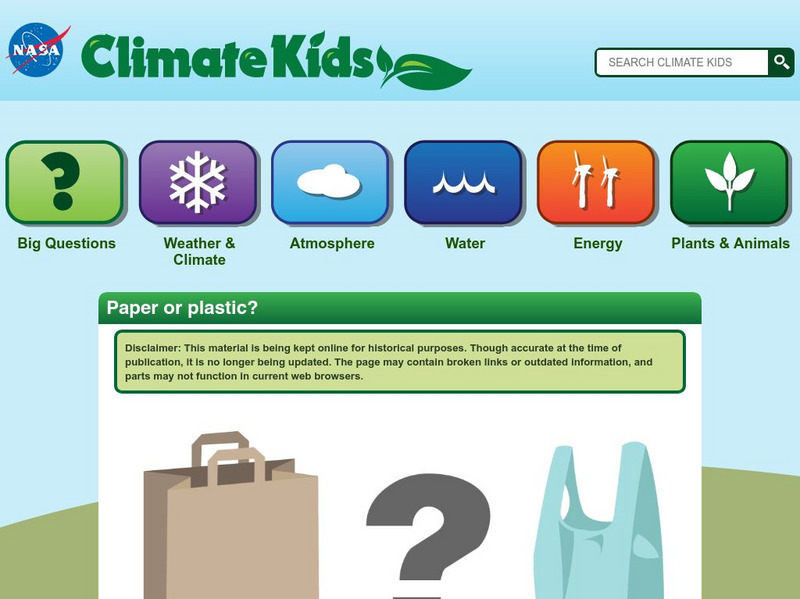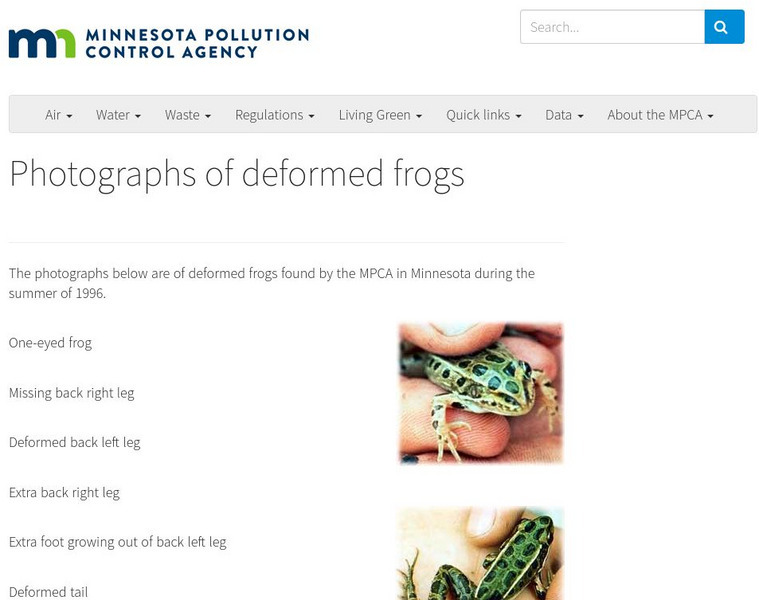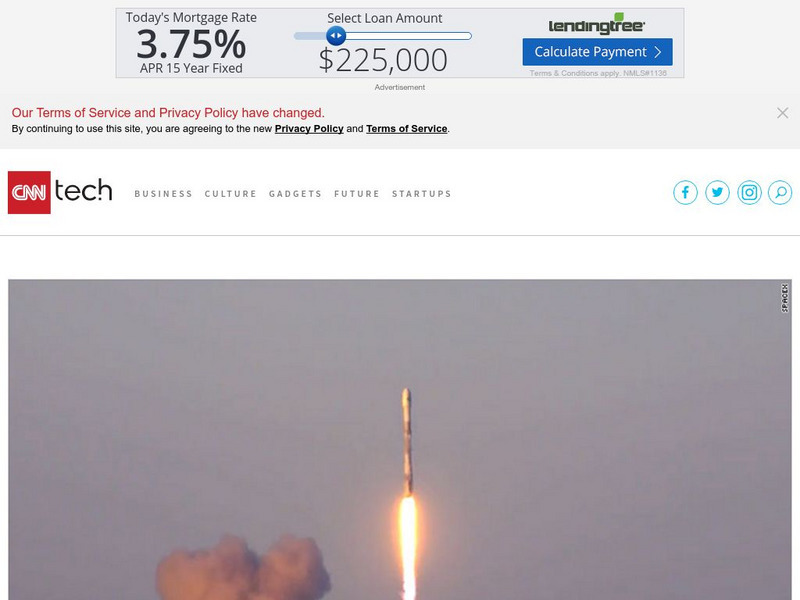Hi, what do you want to do?
NASA
Climate Kids: Be a Power Saver
Do you ever wonder where electricity comes from? Discover the process of how power plants create energy and it ends up at the touch of your fingertips.
NASA
Climate Kids: Paper or Plastic?
Have you ever been in the grocery store and you were asked for paper or plastic? Discover the pros and cons of either choice, and then ultimately decide which might be the best.
Other
Minnesota Pollution Control Agency: Photographs of Deformed Frogs
Photographs of deformed frogs discovered in the wild and held in captivity from 1997 - 2006. Each picture has a brief explanation of the deformity.
Other
Epa: Today's Aqi Forecast
An interactive map used to find the current and forecasted air quality index for any location in the United States.
National Institutes of Health
Niehs: Breathtaking Fun
Learn how your lungs help you breathe by making a model of the way your lungs work using a clear plastic bottle, scissors, and two medium-sized balloons.
National Institutes of Health
Niehs: Asthma and Allergies and Their Environmental Triggers
Discover what causes allergy and asthma attacks and what you can do to prevent them.
National Institutes of Health
National Institute of Environmental Health Sciences: Let's Talk About Water
Discover why water is so important, especially clean water. Find out where water comes from and how we can make it safe to drink and free from pollution.
ClassFlow
Class Flow: Organisms and Ecology
[Free Registration/Login Required] This lesson is intended to be a Science lesson about organisms and ecology for middle school students.
Other
National Pollutant Inventory: Background Information
This site focuses on water and air pollution in Australia, with a brief mention of sea breezes.
ClassFlow
Class Flow: Understanding Ecosystems: Humans Part 4 of 4
[Free Registration/Login Required] Students will be able to understand how humans affect and interact with different ecosystems (such as pollution, habitat restoration). There are opportunities to link to the web to explore this further.
ClassFlow
Class Flow: Air Pollution
[Free Registration/Login Required] Explore Air Pollution with George the Gecko. Learn about the major air pollutants, AQI, (Air Quality Index) and what we can do to help! Games and links to outside websites are included.
ClassFlow
Class Flow: Changes in Habitats
[Free Registration/Login Required] A 2nd grade unit on how people and weather can change habitats. Topics include too much and too litter rain (flooding and drought), lightning and fire, and land, water, and air pollution. This flipchart...
Other
The Catholic University of America: Clean Air Act
This site briefly explains the Clean Air Act, as well as having links to very in-depth explanations of the act.
National Geographic Kids
National Geographic Kids: Drinking Water: Bottled or From the Tap?
Why don't more people drink water straight from the kitchen tap? Read this author's thoughts on drinking water from the tap or bottle.
Ducksters
Ducksters: Animals for Kids: Amphibians in Danger
Kids learn about the decline of the amphibian population. Why are they endangered and what is causing it.
Discovery Education
Discovery Education: Scientific Inquiry, Episode 1
In this classroom activity, students discuss how people and pollution affect the environment. Then they demonstrate ways to recycle, reduce, and reuse.
HotChalk
Hot Chalk: Lesson Plans Page: Aquatic Wildlife and Pollution
This lesson plan is designed to teach young children about healthy and hazardous marine and freshwater environments and be able to describe the effects of the pollution of plastics on wildlife.
HotChalk
Hot Chalk: Lesson Plans Page: Causes of Pollution
This lesson plan is designed to teach young children identify the types of pollution, the sources of the pollution, and how they can protect the environment from further pollutants.
Ducksters
Ducksters: Environment for Kids: Land Pollution
Kids learn about land pollution and how it effects the environment and health. Study causes, pollutants, garbage, landfills, trash, and facts.
National Earth Science Teachers Association
Windows to the Universe: Nitric Acid
Provides a general overview of nitric acid, its composition, and its uses.
Mocomi & Anibrain Digital Technologies
Mocomi: Major Domains of the Earth Hydrosphere
Learn about the hydrosphere, the water cycle, the major threats to the hydrosphere, and environmental problems.
Mocomi & Anibrain Digital Technologies
Mocomi: Global Warming: Causes, Effects and Prevention
Explains the causes and effects of global warming and how to prevent it.
CNN
Cnn: Tech
CNN coverage of the latest in science and technology news. Website includes the environment and discovery highlights.
Curated OER
Air Pollution
This article discusses how the United States is to blame for much of the world's pollution, along with some possible steps that could be taken by the government to reduce this.























